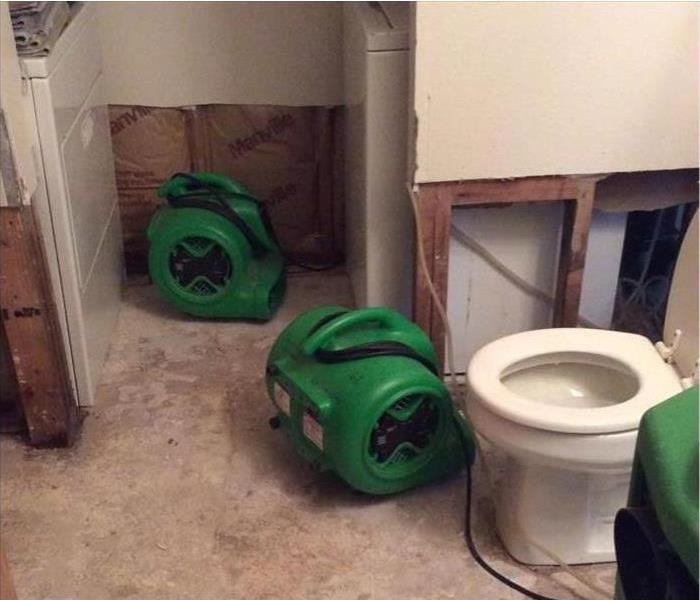What To Do After a Toilet Overflow
8/14/2018 (Permalink)
An overflowing toilet is a frustrating problem, no matter what the circumstances involve. However, when the overflow involves a sewage backup, the problem becomes much more serious. Sewer damage could contain viruses, bacteria, and other illness-carrying microbes. The possible risks associated with contamination could affect your Vancouver, WA, home and your family for many years.
- Toilet Overflow: Blockage in the plumbing system causes the toilet to overflow. In this case, the flooding water hasn't passed through the sewer system. Water damage may occur, but you won't have to involve the sewage company.
- Plumbing System Overflow: Water from the sewage system backs up through residential lateral pipes and into homes. This water is often filled with serious contaminants, such as raw sewage.
If you can't tell whether you have an overflowing toilet or a sewage situation, contact a professional immediately. If you have a flooded toilet, you may be able to handle the problem yourself.
Step 1: Stop Flushing
Much of the time when homeowners see something they don't like in the toilet, they flush. Unfortunately, this will only make a flooded toilet situation worse. Each flush contains more than a gallon of water that you'll have to clean up off the floor.
Step 2: Turn Off the Water
There should be a water shut-off valve located near the floor behind the toilet. Once the water has been shut off, you won't have to worry about more water making the situation worse.
Step 3: Clean Up Spilled Water
If the toilet was only flushed once or twice, you can probably mop it up pretty quickly. If there were more flushes and the resulting four to five gallons of water, you may want to contact a professional to prevent water damage.
Step 4: Address the Clog
Hopefully, you'll be able to dislodge whatever was stuck in the pipes and return to your normal daily activities. Otherwise, you may need to contact a professional.
Remember to protect your home and family from sewer damage. Learn how to recognize the type of trouble you have and take the right steps for correction.






 24/7 Emergency Service
24/7 Emergency Service
